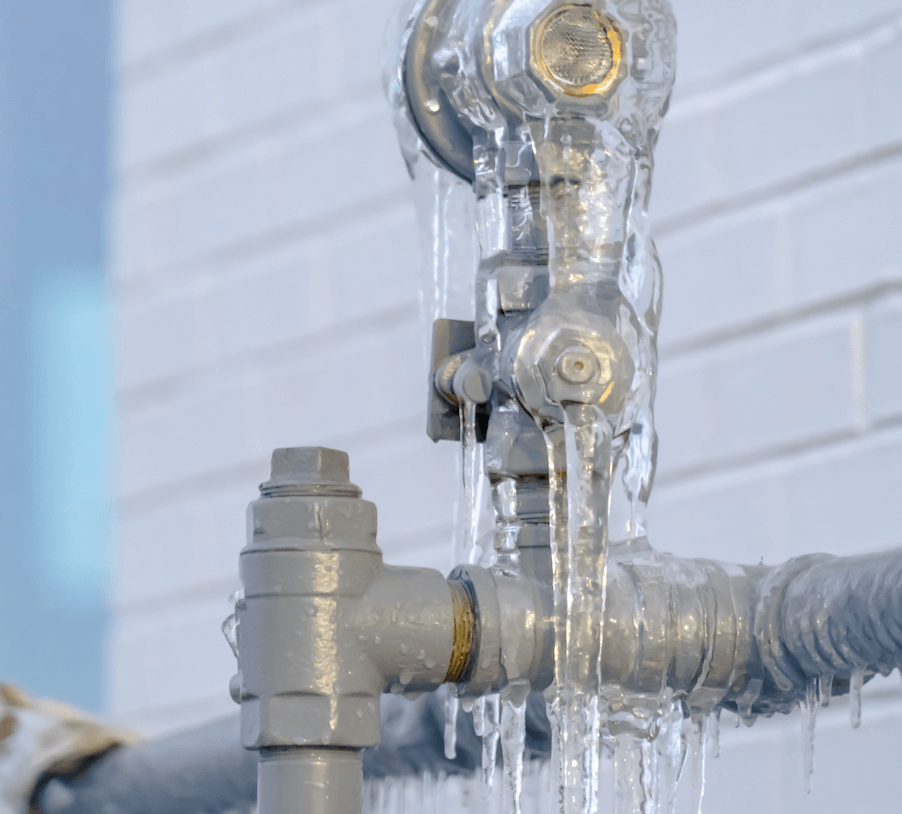Tips for Preventing Frozen Pipes in Cold Weather: Specialist Tips
Tips for Preventing Frozen Pipes in Cold Weather: Specialist Tips
Blog Article
What're your concepts on How to Prevent Your Pipes From Freezing?

Winter can ruin your pipes, specifically by freezing pipes. Right here's just how to avoid it from happening and what to do if it does.
Intro
As temperatures decrease, the danger of icy pipes boosts, potentially leading to pricey repair services and water damages. Recognizing how to prevent frozen pipes is vital for property owners in cool environments.
Prevention Tips
Protecting at risk pipes
Wrap pipes in insulation sleeves or use heat tape to protect them from freezing temperature levels. Focus on pipes in unheated or outside locations of the home.
Home heating methods
Maintain interior rooms adequately heated up, particularly areas with plumbing. Open up cupboard doors to allow cozy air to circulate around pipelines under sinks.
How to identify frozen pipes
Seek reduced water circulation from faucets, unusual smells or noises from pipes, and visible frost on subjected pipelines.
Long-Term Solutions
Architectural changes
Take into consideration rerouting pipelines away from outside wall surfaces or unheated locations. Include added insulation to attic rooms, basements, and crawl spaces.
Updating insulation
Purchase top quality insulation for pipelines, attic rooms, and walls. Correct insulation aids keep consistent temperatures and minimizes the threat of icy pipes.
Securing Outdoor Plumbing
Yard hose pipes and outdoor taps
Detach and drain garden pipes prior to winter. Mount frost-proof spigots or cover outdoor faucets with shielded caps.
Comprehending Frozen Pipes
What triggers pipes to ice up?
Pipelines ice up when revealed to temperature levels listed below 32 ° F (0 ° C) for expanded periods. As water inside the pipes ices up, it increases, putting pressure on the pipe wall surfaces and possibly creating them to burst.
Dangers and damages
Icy pipelines can result in supply of water disruptions, home damages, and costly repairs. Burst pipelines can flood homes and create comprehensive structural damage.
Indications of Frozen Water Lines
Recognizing frozen pipelines early can prevent them from rupturing.
What to Do If Your Pipes Freeze
Immediate activities to take
If you believe icy pipes, keep faucets available to ease pressure as the ice thaws. Make use of a hairdryer or towels taken in hot water to thaw pipes gradually.
Verdict
Stopping frozen pipes requires positive steps and fast feedbacks. By recognizing the causes, indications, and preventive measures, home owners can safeguard their pipes throughout cold weather.
5 Ways to Prevent Frozen Pipes
Drain Outdoor Faucets and Disconnect Hoses
First, close the shut-off valve that controls the flow of water in the pipe to your outdoor faucet. Then, head outside to disconnect and drain your hose and open the outdoor faucet to allow the water to completely drain out of the line. Turn off the faucet when done. Finally, head back to the shut-off valve and drain the remaining water inside the pipe into a bucket or container. Additionally, if you have a home irrigation system, you should consider hiring an expert to clear the system of water each year.
Insulate Pipes
One of the best and most cost-effective methods for preventing frozen water pipes is to wrap your pipes with insulation. This is especially important for areas in your home that aren’t exposed to heat, such as an attic. We suggest using foam sleeves, which can typically be found at your local hardware store.
Keep Heat Running at 65
Your pipes are located inside your walls, and the temperature there is much colder than the rest of the house. To prevent your pipes from freezing, The Insurance Information Institute suggests that you keep your home heated to at least 65 degrees, even when traveling. You may want to invest in smart devices that can keep an eye on the temperature in your home while you’re away.
Leave Water Dripping
Moving water — even a small trickle — can prevent ice from forming inside your pipes. When freezing temps are imminent, start a drip of water from all faucets that serve exposed pipes. Leaving a few faucets running will also help relieve pressure inside the pipes and help prevent a rupture if the water inside freezes.
Open Cupboard Doors
Warm your kitchen and bathroom pipes by opening cupboards and vanities. You should also leave your interior doors ajar to help warm air circulate evenly throughout your home.

We had been shown that report on How to prepare your home plumbing for winter weather from a good friend on a different web page. Please set aside a second to promote this blog if you appreciated it. We thank you for your readership.
Automated Marketing Report this page